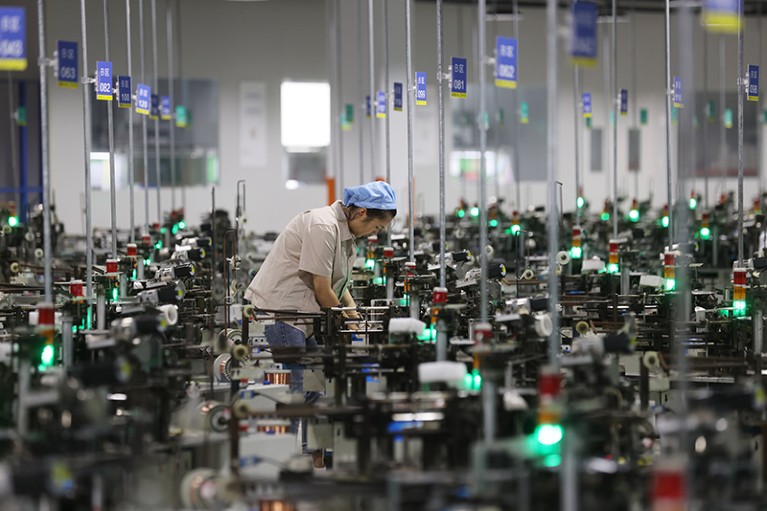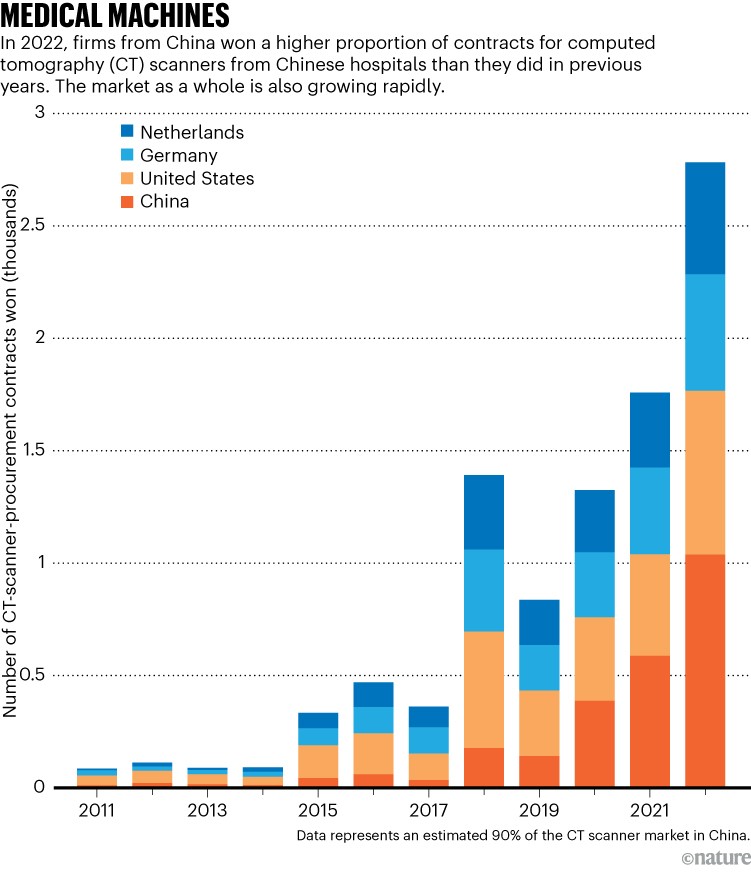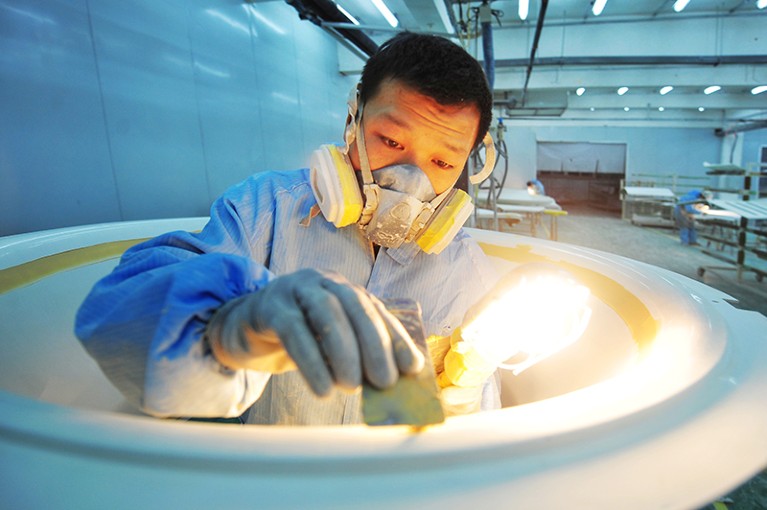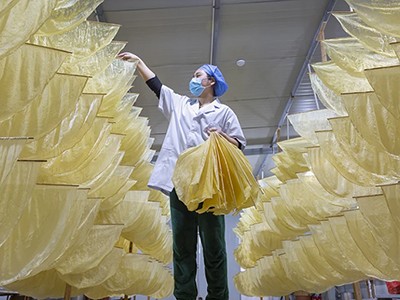[ad_1]
industria tercera temporadaEl episodio seis termina no solo con una explosión, sino con una explosión total entre Yasmine Cara Hanane (Marisa Abella) y Harper Stern (Mihala).
La historia comienza cuando Yasmine se da cuenta de que Harper se ha aprovechado de ella en sus intentos de reducir su participación en el banco de inversión Pierpoint, pero es mucho más que eso. Yasmine no puede aceptar el hecho de que Harper, quien la ayudó a encubrir su participación en la muerte de su padre depredador, Charles (Adam Levy), se aprovechó de ella de esta manera: ¡el día que Yasmine identificó su cuerpo, nada menos!
Cómo los Pet Shop Boys se convirtieron en la banda sonora de la tercera temporada de 'Industry'
La lucha que siguió fue extremadamente intensa: no quedó ningún insulto sin decir ni piedra sin remover. Jasmine ataca a Harper por explotar su dolor, llamándola narcisista y metiéndose en sus heridas más profundas, como su relación con su hermano separado. Harper responde con su propio fuego. Le recuerda a Jasmine lo ordinaria que es sin el barniz de privilegio que la proteja. Más tarde, en un eco de la discusión final entre Charles y Yasmine, ella la llama puta.
“No hay forma de que se recuperen de esto”.
“Realmente pensé: 'Este es el final para ellos'”, le dijo Mihala a Mashable sobre su primera reacción al leer el argumento. “No hay manera de que puedan volver de esto”.
Hablando con Mashable en una llamada conjunta de Zoom, la dinámica de Myha'la y Abela estaba lejos de ser enemigos espinosos. industria Los espectadores han llegado a conocer a Harper y Jasmine. Son el epítome de la tranquilidad, el tipo de comodidad que se obtiene al trabajar en estrecha colaboración durante cinco años. Dado que Harper y Jasmine comparten menos escenas esta temporada, debido a que Harper ya no trabaja en Pierpoint, coinciden en que estaban entusiasmados por la oportunidad de tener esta conversación seria.
“Puede que haya algunos episodios más [this season] “No hay interacción entre los dos personajes”, dijo Abella. “Entonces, cuando tenemos esos momentos, también hay una cierta cantidad de adrenalina. Ya sabes, 'Estoy emocionado de hacer esta escena'.
'Harry Luty de la industria analiza el viaje de Robert con la ayahuasca: 'Este es un gran paso'
Mihala añadió: “Más que nada, vivimos para esos momentos. Los actores dicen: 'Finalmente podré permitirme esto y ser asqueroso'. Siento que todos han estado esperando este momento”. [between Yasmin and Harper]”Lo prueban al final de la temporada 1. Pero eso no es nada comparado con lo que obtienen en esa escena”.
La escena es la culminación de la tensión que se ha ido acumulando a lo largo de tres temporadas entre estos personajes, con todo, desde problemas de clase hasta el triángulo amoroso siempre latente entre Harper y Jasmine. Robert Spearing (Harry Luty) Finalmente, el espectáculo va con fuerza. “Gran parte del programa es subtexto, por lo que es fantástico cuando el subtexto se convierte en texto”. industria “De repente, no hay más mentiras en esa escena”, dijo el cocreador de la serie Conrad Kaye a Mashable en una llamada separada con el cocreador de la serie Mickey Down. “No hay más evasión”.

Mihala y Marissa Abella en “Industria”.
Copyright: Nick Strasburg/HBO
Como muestra cada gramo de resentimiento y enojo de Jasmine y Harper, los dos continúan intercambiando insultos en un intento desesperado de demostrar que no les importa lo que diga o haga la otra parte. Pero, por supuesto, les importa lo que la otra parte dice o hace, y comprender este dolor fue clave para que Mihala y Abela comprendieran la escena.
Noticias destacadas sobre Mashable
“Tuvimos conversaciones con Mikey y Conrad sobre lo que les dolió específicamente de lo que pasó”, dijo Abella. “Es algo muy personal cuando hablas de cómo alguien te lastimó y nos permite desarrollarnos con estos personajes tanto como podamos. Lo sabemos mejor que nadie”. “¿Qué le gusta a Jasmine de la relación con Harper y por qué se siente como una traición?”
Otro tema de conversación entre los actores y productores fue el doble golpe que terminó la escena, cuando Yasmine abofeteó a Harper y Harper le devolvió el golpe. Originalmente, Harper no iba a abofetear a Yasmine, pero Mihala insistió en que le devolvió el golpe.
Cómo 'Industry' hizo pasar a Rishi por un infierno en su episodio 'más intenso' hasta el momento
“Pensé: 'No hay manera de que esta perra pueda ponerme las manos encima y yo no le devolveré el golpe'”, se rió Mihala.
Ella continuó: “Estaba muy agradecida de que Mickie y Conrad me dejaran hacerlo, porque fue una conversación seria que duró unos días y en la que dije: 'Chicos, por favor, sólo quiero abofetearla'. Por favor”. Hay mucha cultura en ello. Porque alzamos la voz y decimos las peores cosas, pero una vez que se rompe la barrera física, levantamos las manos. Punto. Honestamente. Y si se supone que Harper es de Nueva York, ¿De qué estamos hablando?”
Sin embargo, las dobles bofetadas constituyen un argumento sólido. industria La intensidad de la escena va un paso más allá al terminar el episodio con un flashback de Harper y Jasmine en las horas posteriores a la muerte de Charles. Harper consuela a Jasmine entre lágrimas y los dos se ríen a expensas de Charles. Cuando Harper rodea a Yasmine con su brazo, vemos a este dúo en su punto más cercano, pero sabemos que solo faltan unos meses para la tragedia. Es un eco desgarrador del comienzo del episodio, donde vemos a Harper cubrir a Jasmine sin dudarlo un segundo.

Mihala y Marissa Abella en “Industria”.
Copyright: Nick Strasburg/HBO
“El episodio final trata sobre cómo llevamos a Harper y Jasmine al fondo de su relación, donde se abofetean”, le dijo Dawn a Mashable. “Este es el final para ellos en términos de su relación personal, así que mostremos también el punto en el que su relación era más pura, cuando Harper estaba haciendo algo por Yasmine que probablemente fue una de las cosas más desinteresadas que jamás haya hecho”.
Más tarde, Jasmine seguiría creyendo que ayudarla en sus momentos más vulnerables era sólo otro intento de control. Pero para Mihala y Abella, este no es el caso.
“Parece una cuestión de vida o muerte”, dijo Mihala. “En ese momento cuando Harper descubre lo que le pasó a Jasmine, mira el rostro aterrorizado de su amiga, como si estuviera completamente agotada, y claramente necesitara ayuda. No hay duda de si yo, como tu amiga, te ayudaré o no. La situación es tan grave que Harper no puede preguntar: '¿Cómo puedo usar esto esta noche?' No se trata de trabajo, solo se trata de nuestra amistad, y eso es todo.
Abella agregó que ayudar a Harper en ese momento la convirtió en una presencia tranquilizadora para Jasmine durante toda la temporada. “En el momento en que Harper entra en la habitación, [Yasmin] “Al menos puede respirar un poco de aire fresco, sabiendo que hay alguien en esta sala que entiende por lo que estás pasando, incluso si ella no puede compartir la carga”, dijo Abella. “Puedo verla y ella puede verme”.
Pero ahora, la discusión ha obligado a Harper y Jasmine a verse de manera diferente, exponiendo toda su inseguridad y hostilidad. Y en un programa basado en apuñalar por la espalda y explotar a las personas para salir adelante, tal vez esta sorprendente claridad sea un regalo especial. Pero para Harper y Jasmine, que se están perdiendo no sólo como amigos sino como sistema de apoyo, este regalo tiene un costo muy alto.
[ad_2]
Source Article Link























